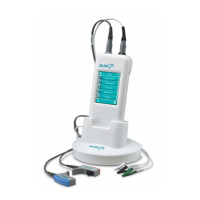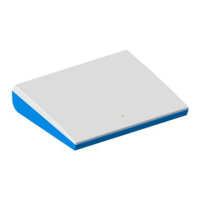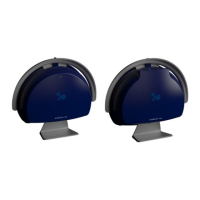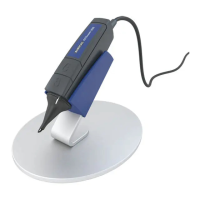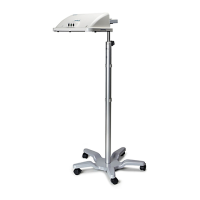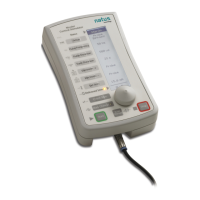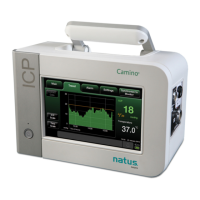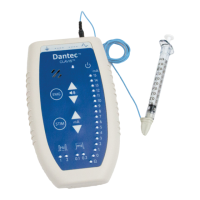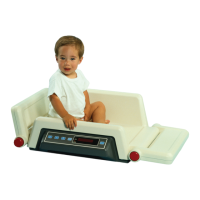II. Overview of the ALGO Screening Technology
The ALGO screener delivers faint click sounds at 35 or 40 dBnHL (“normal hearing level” scale)
to the baby’s ears through disposable earphones. Each click evokes a series of identifiable brain
waves from the infant’s auditory brainstem. This brain wave activity is called the ABR (auditory
brainstem response). Each click from the ALGO coupled with a response to that click is called a
“sweep”.
Natus sensors on the baby’s skin capture the ABR and transmit it to the ALGO 3i screener.
Since these signals are very small compared to other bio-electrical activity in the baby’s brain, it is
important that the baby is sleeping or in a quiet state. The ALGO screener uses patented signal
processing technology to separate the ABR from background noise and other brain activity.
These responses are matched against a stored pattern called a “template”, derived from the ABRs
of normal-hearing infants. The ALGO screener must detect the ABR with very high statistical
confidence in order to issue a PASS result. The ALGO technology includes a patented dual-
artifact rejection system to prevent non-ABR activity from contributing toward a PASS result.
This ensures a very high degree of accuracy of the PASS result issued by an ALGO device.
The ALGO screener will issue a PASS result when it collects sufficient data to establish with
> 99% statistical confidence that an ABR signal is present and consistent with the template. This
confidence level can be reached at a minimum of 1000 sweeps for 35dBnHL screening, and 2000
sweeps for 40dBnHL screening.
The ALGO screener will continue to collect data up to 15,000 noise-weighted sweeps. If it has
not established with > 99% statistical confidence that the ABR signal is present after 15,000
noise-weighted sweeps, it will issue a REFER result.
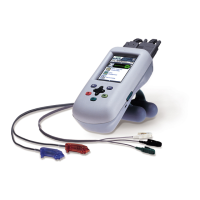
